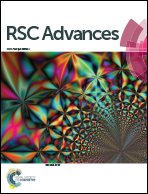Recent advances in composite membranes modified with inorganic nanoparticles for high-performance lithium ion batteries
Abstract
Separators with excellent physical and electrochemical performances are in urgent demand for higher power-density and energy-density lithium ion batteries (LIBs). This implies that these separators must possess high porosity, thin thickness, a large electrolyte uptake, and good thermal stability and mechanical properties. Thus, it is difficult for single component separators to satisfy all of these requirements. Recently, composite membranes modified with inorganic nanoparticles have attracted great interest as LIB separators, which show better physical and electrochemical performances than pure separators. In this article, recent advances, the main types, their manufacturing and the performances of composite membranes are thoroughly reviewed, covering three important types: inorganic particle-coated composite membranes, inorganic particle-filled composite membranes and inorganic particle-filled non-woven mats. The outlooks and future direction are also described in this review. This review will hopefully stimulate more extensive and insightful studies for fabricating and designing new LIB separators with excellent physical and electrochemical performances.


 Please wait while we load your content...
Please wait while we load your content...